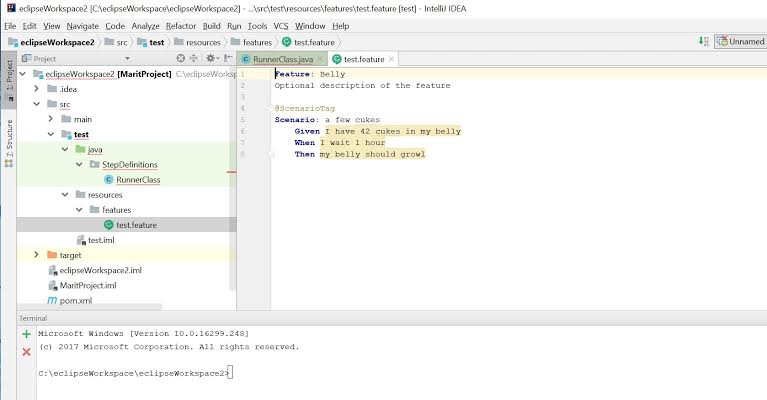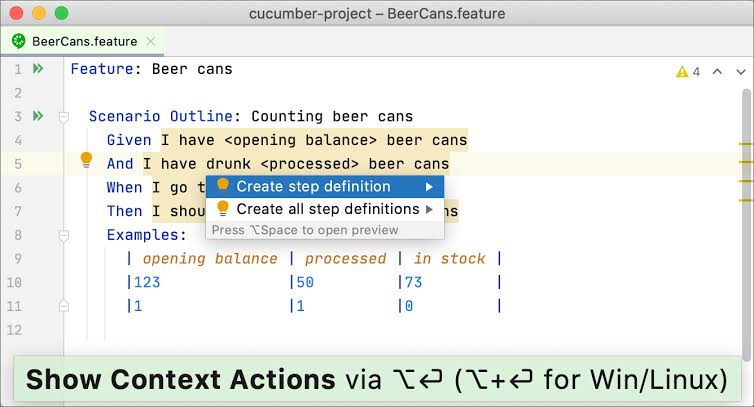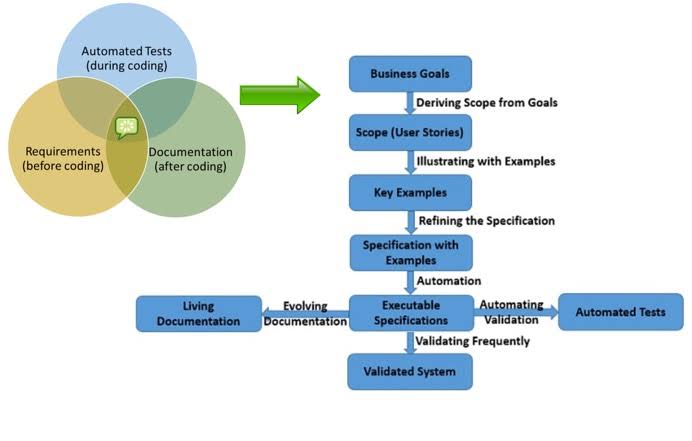In the rapidly evolving landscape of software development, Agile and Scrum methodologies have emerged as the foundation of iterative and collaborative practices. These methodologies expedite software delivery, yet underscore the imperative of unwavering quality. In this blog post, we will explore the intricacies of establishing robust test automation practices within Agile/Scrum environments, harnessing the power of the versatile Cucumber framework.
We will also explore the seamless integration of these automated tests into the Continuous Integration and Continuous Deployment (CI/CD) pipelines, ensuring an unbreakable alignment between swift development and unwavering reliability throughout the software development lifecycle.
A Brief Overview and Understanding Test Automation in Agile/Scrum

In the Agile/Scrum universe, development cycles are sliced into short, time-bound sprints, each yielding incremental contributions to the software. While this iterative approach is conducive to rapid evolution, it simultaneously presents the challenge of sustaining uncompromised quality.
Test automation emerges as a pivotal enabler, acting as a fortress against regressions and defects, while enabling teams to maintain an unswerving rhythm of innovation.
By automating routine and critical test cases, Agile teams gain a competitive edge, characterized by faster feedback loops, curtailed manual testing efforts, and an impenetrable shield of validation.
Let us consider a real-world scenario. A global e-commerce platform endeavors to enhance its search functionality, enabling customers to discover products seamlessly. In each sprint, new search algorithms are introduced, aiming to improve search accuracy and speed.
Automated tests validate these algorithms, ensuring that search results remain accurate, and relevant products are displayed to customers. Without automated testing, the rapid pace of algorithmic changes could inadvertently lead to inaccurate search results, frustrating customers and impeding their shopping experience.
A Brief Introduction of Cucumber

The essence of effective collaboration lies in Cucumber, a cornerstone of Behavior-Driven Development (BDD). Cucumber bridges the communication gap between technical and non-technical stakeholders, facilitated by Gherkin, a human-readable language that outlines test scenarios. A real-world Gherkin scenario paints an evocative picture
gherkin
Feature: User Registration
Scenario: Signing up for a new account
Given the user is on the registration page
When the user enters valid registration details
And submits the registration form
Then the user should receive a confirmation email
And be able to log in with the new account
This Gherkin scenario serves as a common language that fosters shared understanding among team members, regardless of their technical background.
Setting Up Cucumber in a Project
 Embarking on the Cucumber journey involves configuring essential dependencies. In a Maven-based Java project, enhance your pom.xml
Embarking on the Cucumber journey involves configuring essential dependencies. In a Maven-based Java project, enhance your pom.xml
xml
<dependency>
<groupId>io.cucumber</groupId>
<artifactId>cucumber-java</artifactId>
<version>6.10.4</version>
<scope>test</scope>
</dependency>
With dependencies in place, establish a Cucumber test runner class orchestrating feature files and step definitions. Let us take this illustrative example.
java
import io.cucumber.junit.Cucumber;
import io.cucumber.junit.CucumberOptions;
import org.junit.runner.RunWith;
@RunWith(Cucumber.class)
@CucumberOptions(features = “src/test/resources/features”, glue = “stepdefinitions”)
public class TestRunner {
}
Here, the features option specifies the directory containing feature files, while the glue option denotes the package housing step definitions.
Creating Step Definitions

Step definitions stand as a crucial conduit between Gherkin scenarios and automation logic. These Java methods are pivotal in translating human-readable steps into executable actions. A magnified look into the step definitions for the user registration scenario reveals intricate detail:
java
import io.cucumber.java.en.Given;
import io.cucumber.java.en.When;
import io.cucumber.java.en.Then;
public class UserRegistrationStepDefinitions {
@Given(“the user is on the registration page”)
public void userIsOnRegistrationPage() {
// Simulate navigation to registration page
}
@When(“the user enters valid registration details”)
public void userEntersValidDetails() {
// Simulate entering valid registration details
}
@When(“submits the registration form”)
public void userSubmitsForm() {
// Simulate submitting registration form
}
@Then(“the user should receive a confirmation email”)
public void userReceivesConfirmationEmail() {
// Simulate verifying confirmation email
}
@Then(“be able to log in with the new account”)
public void userAbleToLogin() {
// Simulate user login with new account
}
}
Each step definition encapsulates automation logic that emulates user interactions and verifies outcomes.
Integrating Cucumber with CI/CD Workflows

The union of Cucumber tests with CI/CD workflows is pivotal in achieving the pinnacle of streamlined software delivery. Consider a Jenkins pipeline seamlessly integrating Cucumber tests:
groovy
pipeline {
agent any
stages {
stage(‘Checkout’) {
steps {
// Retrieve code from version control
}
}
stage(‘Build and Test’) {
steps {
sh ‘mvn clean test’ // Execute Cucumber tests
}
}
stage(‘Deploy’) {
steps {
// Deploy the application
}
}
}
}
This Jenkins pipeline masterfully orchestrates stages, from code checkout to deployment, with the ‘Build and Test’ stage executing Cucumber tests using the Maven command mvn clean test.
Embracing Test Automation in Agile/Scrum
The path to Agile excellence is illuminated by the symbiotic relationship between test automation and Agile/Scrum practices. Test automation empowers Agile teams to accelerate development while ensuring software quality. It promotes early and continuous testing, swiftly identifying defects and enhancing collaboration. Moreover, it enhances regression testing, enabling teams to confidently refactor and evolve codebases without compromising reliability. The amalgamation of Cucumber with Agile methodologies embodies the essence of collaboration, shared understanding, and rapid feedback loops.
Consider a real-world Agile/Scrum scenario where a software team is tasked with building a mobile app for a fitness tracker. In each sprint, new features such as step tracking, calorie counting, and heart rate monitoring are introduced. Automated tests verify the accuracy of step tracking algorithms, ensuring that user steps are accurately counted and reflected in the app. These tests act as a safety net, allowing the team to iterate quickly while guaranteeing that core functionality remains intact.
Conclusion
In the dynamic realm of Agile/Scrum development, test automation emerges as a steadfast companion. Cucumber, enriched by the Gherkin syntax, propels collaboration and shared understanding among diverse team members. Through the seamless integration of Cucumber tests into CI/CD workflows, Agile/Scrum practitioners forge an unbreakable alliance between development and testing. This synergy transcends conventional boundaries, upholding the promise of Agile principles – delivering high-quality software at the speed of innovation.
By interweaving real-world scenarios, detailed explanations, and intricate code examples, this blog post serves as an exhaustive guide for implementing test automation in Agile/Scrum environments using Cucumber and CI/CD workflows. The fusion of these practices accelerates software delivery while nurturing a culture of continuous improvement and exceptional software quality. As the software development landscape continues to evolve, embracing test automation within Agile/Scrum remains a resolute pathway to success.






Add comment